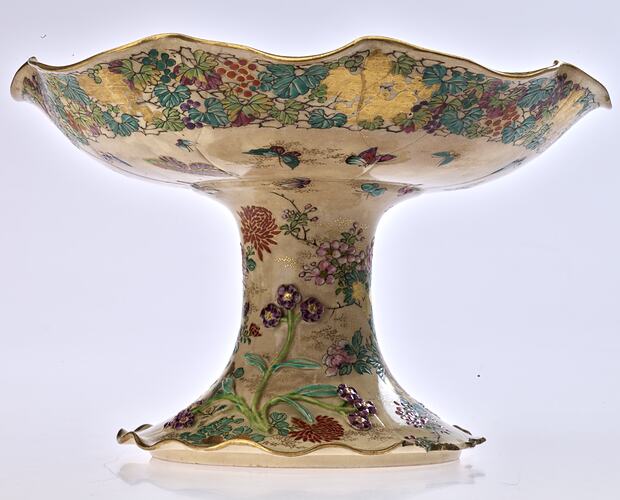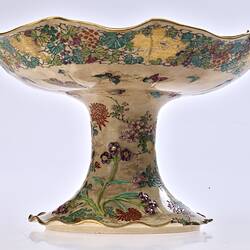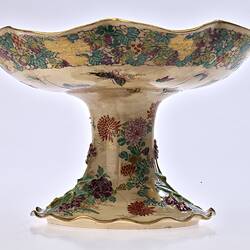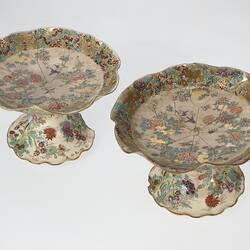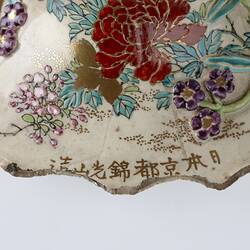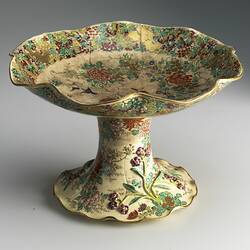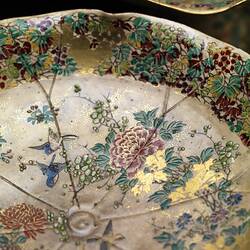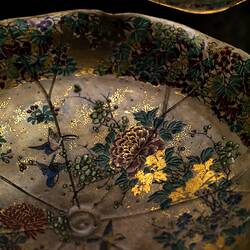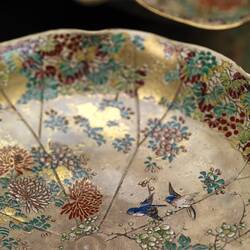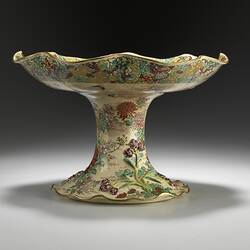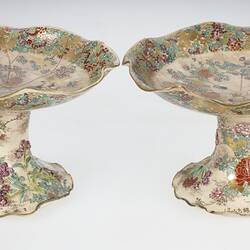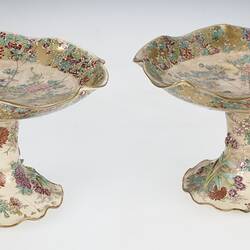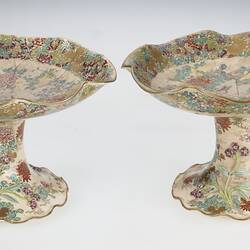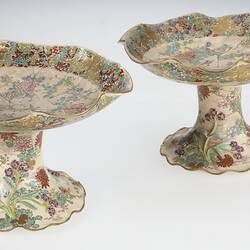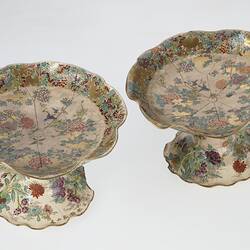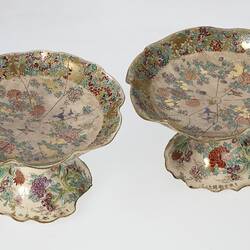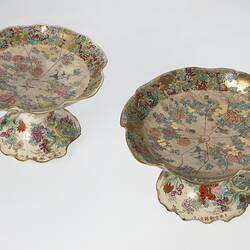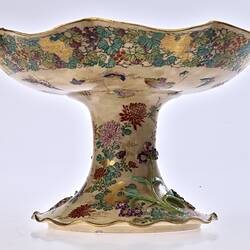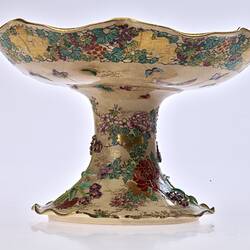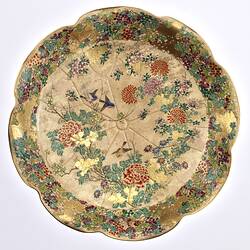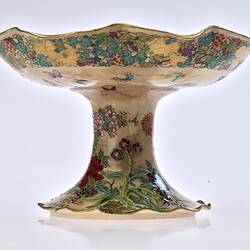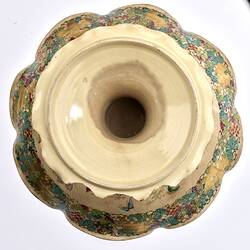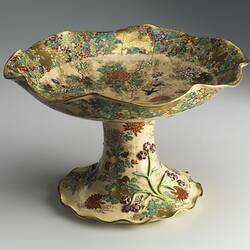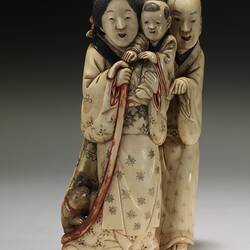Summary
One of a pair of Satsuma compotes decorated with birds & chrysanthemums. Manufactured in Japan in the early Meiji period (1872-1880), by Kinko-zan, Kyoto, Japan.
Satsuma ware is a type of Japanese ceramic pottery, also known as 'Satsuma porcelain'. The term can be used to cover a variety of ceramics, but is often used to describe a style identified by its rich gold and polychrome decoration. The technique developed during the sixteenth century, following the Japanese invasion of the Korean Peninsula, when Korean potters were brought back to Japan to establish a pottery industry. Satsuma ware was introduced to a Western market following the exhibition of examples at the 1867 Paris International Exhibition, at the end of the Edo period, and very quickly gained an appeciation outside of Japan.
The Kinko-zan family were associated with the production of Awata ware (a precursor of Satsuma) from the mid-Edo period (18th century). Kinko-zan Sobei VI (1824-1884) began to incorporate elements of Satsuma ware into the company's productions from 1872; this ware became known as Kyoto Satsuma ware.
In 1873, the Meiji government sent a display of this ware to the Vienna International Exhibition, where it was awarded a prize. The family's ceramic ware was subsequently exhibited and recognised with awards at numerous International Exhibitions, including at Sydney (1879), Paris (1889) and Chicago (1893), among other exhibitions.
Kinko-zan Sobei VII (1868-1927) continued the family business upon his father's death in 1884. At this time, the Kinko-zan workshop, located in Awata-guchi, was the largest in the area with over 200 artists.
Physical Description
Shallow bowl with fluted edges on cylindrical neck tapering out to fluted foot. Painted all over with birds and flowers in naturalistic colours, highlighted in gold. Moulded flowers and leaves applied to neck and foot.
More Information
-
Collection Names
-
Collecting Areas
-
Acquisition Information
Cultural Gifts Donation from Dr Will Twycross, 23 Jan 2009
-
Acknowledgement
Donated through the Australian Government's Cultural Gifts Program
-
Manufacturer
-
Place & Date Exhibited
Royal Exhibition Building (REB), Nicholson Street, Carlton, Greater Melbourne, Victoria, Australia, 1880-1881
-
Collector
Mr John Twycross, Elsternwick, Greater Melbourne, Victoria, Australia, 1881
-
Inscriptions
Signed in gilt kanji on upper side of foot: Kinko-zan Zou (Made by Kinko-zan)
-
Classification
Royal exhibition building, International exhibitions, Exhibition heritage
-
Category
-
Discipline
-
Type of item
-
Overall Dimensions
245 mm (Width), 150 mm (Height)
-
Maximum dimensions
161 mm (Height), 248 mm (Circumference)
Measurement From Conservation.
-
Keywords
Ceramics, Decorative Arts, Exhibitions: Melbourne International, 1880-1881, Japanese Art, Royal Exhibition Building
